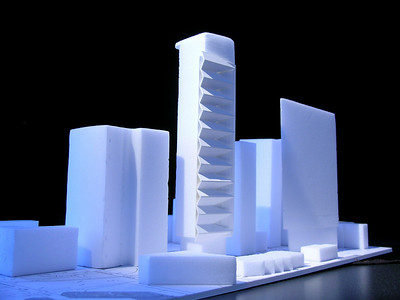
What role do physical architectural models play in design process?

Physical architectural models play a significant role in the design process, offering a range of benefits that complement digital modeling and visualization techniques. Here are some of the key roles that physical models play in the design process:
Design Exploration: Physical models allow architects to explore and experiment with design ideas, spatial relationships, and material choices. By building a model, architects can gain a deeper understanding of the project’s spatial qualities and how different design elements work together.
Communication Tool: Architectural models are an effective means of communication, enabling architects to convey their design ideas to clients, collaborators, and other stakeholders. A physical model can help bridge the gap between technical drawings and the finished project, making it easier for non-professionals to visualize the design.
Collaboration: Physical models facilitate collaboration among architects, engineers, and other design professionals. By working together on a shared model, team members can identify potential issues, suggest improvements, and develop a more cohesive and integrated design solution.
Conflict Resolution: Architectural models can help identify and resolve potential design issues before construction begins. By studying the model, architects can address potential spatial conflicts, structural challenges, and material selection concerns, ensuring a smoother construction process.
Tactile Experience: Physical models offer a tactile experience that digital models cannot replicate. The hands-on nature of model building allows architects to engage more intimately with their designs, while providing clients with a tangible representation of the project that they can touch and explore.
Material Exploration: Building a physical model enables architects to experiment with various materials, textures, and finishes, giving them a better understanding of how these elements will contribute to the overall design.
Iterative Design Process: Physical models allow architects to make adjustments and refinements to their designs throughout the process. By continually refining the model, architects can optimize their design solutions and minimize the need for costly changes during construction.
Public Engagement: Architectural models can be used as a tool for public engagement, allowing communities to better understand proposed developments and provide feedback. Displaying a physical model in a public space can help generate support for a project and foster a sense of community involvement.
Presentation and Marketing: Physical models can be invaluable for presentations, competitions, and marketing purposes. A well-crafted architectural model can create a lasting impression and effectively showcase the architect’s design intent.
Complementing Digital Technology: Physical models complement digital technology, offering a different perspective on the design that can be used alongside digital models for a more comprehensive understanding of the project.
In conclusion, physical architectural models play a crucial role in the design process, offering tangible visualization, effective communication, and fostering collaboration. By providing a hands-on experience and enabling material exploration, physical models contribute to the development of successful architectural projects.




0 comments
Write a comment